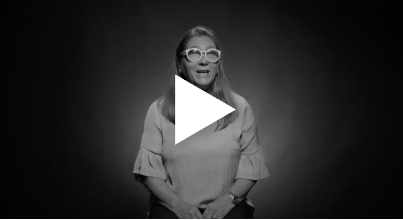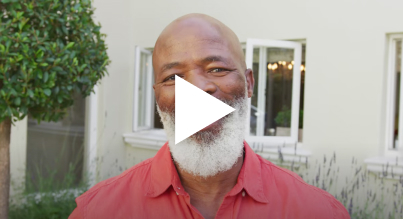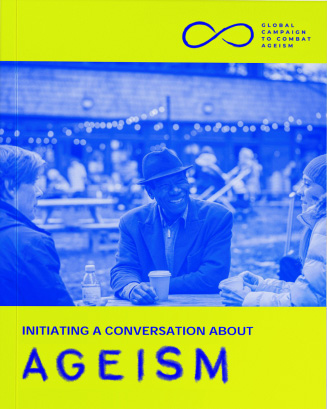Ageism - The Workforce
How ageism and ageist behaviors show up in hiring, promotion, and retention and affect business and interpersonal relationships – and how we can work against it.
75%
of industry professionals are very concerned about the impact of ageism on the industry.
Source: New & Improved Age Inclusion In Adland Survey 2023
Ageism is Adland’s oldest open secret. We all know it. And we all experience it.
Ageism impacts everyone and is harmful at every age and every stage.
So why is this important dimension of diversity often overlooked or left out of DEI initiatives, strategies, and conversations?
Why is ageism an accepted-ism? And what can we do to combat it?
We can work together to consciously create change in our systems, structures, and behaviors. Easy? Nope. Possible? Yes, with ongoing commitment and effort.
We’re problem solvers. Strategizers. Creative thinkers. We make a living calling people to action.
So, this is your invitation to cultivate an age-inclusive mindset. And take action.
Let’s go.
What comes to mind when you
hear the term ageism?
Jot down your answer and expand to find out more 
Ageism [ ey-jiz-uhm ]
Noun
Prejudice or discrimination on the grounds of a person’s age
Ageism refers to:
Stereotypes (how we think)
Prejudice (how we feel)
Discrimination (how we act)
towards others or ourselves based on age
Ageism:
Can affect anyone at any age
May be internalized when a person applies ageist beliefs to themselves
Is harmful
Can be explicit (conscious) or implicit (unconscious)
Is institutional, and perpetuated through actions and policies
Shows up in both subtle and overt ways in business and personal environments
Is interpersonal, occuring in social and business interactions

Is ageism really that big a deal?
New & Improved 2021 Ageism in Adland Survey says:
of advertising professionals
expect to age out of the industry
-
18-30
age group expected to age out at 35.
-
30+
age group expected to age out at 45.
Pretty big deal for career longevity, isn’t it?
Learn More in The New & Improved Surveys
Too young. Too old. Too bad.
Early in my career I was often told I didn't have enough experience. One day when I had finally gotten more experience, I was told I was too old to understand the target group of a specific brand. I was around 35 at that point.
Source: New & Improved Age Inclusion In Adland Survey 2023Age inclusion is an integral part of a solid DEI and people plan.
And a solid organization. It should not be overlooked or deprioritized.
Only
8%
of organizations include age in their DEI strategy
The World Health Organization notes that ageism affects us all, but people may fail to recognize institutional ageism because it may be embedded in the organization’s long-standing rules, norms, policies, procedures, and practices, which employees have never thought to question.

Age inclusion requires action
Here are some you can take:
-
Watch

#AWorld4AllAges Global Campaign to Combat Ageism collab between the WHO and the UN (Run time 1:43)

Learning from each other to overcome ageism (Run time 3:14)
-
Read

Initiating a Conversation About Ageism: A Conversation with your Employer and Colleagues
-
Pay special attention to pages 7-10
-
-
Do
Write down your honest answers to these questions (no judgment!):
-
Have you ever been judged negatively because of your age?
If so, in what situation? How did it make you feel? -
Have you ever judged someone negatively because of their age?
If so, what was the situation? Why do you think you felt that way?
-
-
Act
-
Plan to start a conversation with your team to dig deeper into this issue.
-
Prioritize this discussion. Put it on the agenda right now (we’ll wait).
-
Utilize the activities and questions on pages 7-10 of Initiating a Conversation About Ageism as your guide.
-
Challenge teammates to identify where and how age bias shows up in your org and then take active steps to mitigate it.
-
Follow-up to discuss what actions you took, what worked, and what can be improved.
-
Build on your efforts.
-
Keep consciously and actively improving!
-

Ageism & Intersectionality
Our intersectional identities impact how we experience ageism and age inclusion. Ageism adds an additional layer of discrimination on top of other factors like gender identity, race, LGBTQIA2S+, ability, marital status, parental status, Veteran status, sexual orientation, department, and more.
To highlight just a few examples:
- Gender
- Women face ageism earlier than their male counterparts. They tend to be freelancers or consultants in higher numbers than other genders.
- According to Catalyst, “lookism” is the importance of a youthful, attractive appearance as women show visible signs of aging. This bias affects job security and financial future as women are perceived as being less valuable and competent in the workplace and deemed irrelevant as they age.
- LGBTQIA2S+
- Note that most information on ageism has been through a binary lens (male/female) and needs to be expanded. There is a growing trend towards more inclusive conversations in the industry, but we have far to go.
- Race
- When race and age intersect, inequalities are compounded.
- BIPOC talent is still greatly underrepresented in the industry, and in ads. Black, Indigenous and People of Color is a term used to acknowledge that not all people of color face equal levels of injustice. It is embraced in some circles and controversial in others.
- Research implies that younger Black workers experience more age discrimination than their white counterparts, and it continues to rise during middle age and retirement. This is particularly true for Black women.
I feel like I'm carrying the double weight of worrying about ageism AND race and ethnicity at the same time, making me double invisible and doubly vulnerable.
Source: New & Improved Age Inclusion in Adland 2023 Survey
- Parental Status
- Having children – or not – can impact the perception of availability and professional dedication and may contribute to discrimination in either direction.
- The parent trap: there can be the (mis)perception that parents (particularly mothers) don’t work as hard as their non-parent counterparts, due to family obligations.
- The mommy track: studies show women who return to work after giving birth may be seen as less committed to the job. They’re less likely to be given juicy assignments or be promoted than non-parents.
- Role/Department
- Ageism is rampant in the advertising industry, but is more prevalent and profound in creative departments.
I'm 69 now. I still teach at a portfolio school, so I'm good enough to teach the people who will be working in advertising, just not good enough (in the eyes of agency management) to do actual advertising.
Source: New & Improved Age Inclusion in Adland 2023 Survey - 36% of creative respondents who aged out of their agency have started their own freelance business.
- Non-creatives tend to move to another agency or go client-side.
- Despite backlash, the concept of “aging out” is continuously perpetuated within the industry – by holding company leaders, recruiters, clients, and employees of all ages – even those on the older side.
- Ageism is rampant in the advertising industry, but is more prevalent and profound in creative departments.

Age diverse hiring,
promotion & retention
+
Said they would be somewhat, very, or extremely concerned that their age would prohibit them from securing a new job if they were to search today.
Creatives are nearly
2x more likely
to say they are concerned about finding work if they age out than other departments.
Regardless of my experience, I would not get hired in an advertising agency due to my age. Even my own agency excludes me from pitches and most client meetings because my "age" is "off-brand."
Source: New & Improved Age Inclusion In Adland Survey 2023
Can you spot the ageism?
Here’s the situation: You’re looking for an ad agency position and see this job description.
Find the problematic portions of this posting, and swipe across to reveal the answers. Keep in mind: Ageism works across the age spectrum, and may include what is – and – isn’t said.
What stands out to you?

Coded ageism: crack the code
Coded ageism shows up in words and actions, and in many spaces, including interpersonal conversations, communications, job descriptions and more.
Coded language: What do you think these words are code for? (Remember ageism can show up across the age spectrum.)
Write down your answers. Toggle to check yourself. Then check yourself IRL and work to eliminate coded language from your vocab.
-
1 Recent college grad
-
2 Digital native
-
3 Energetic
-
4 Overqualified
-
5 Growth opportunity
-
6 Tech savvy
-
7 Proven experience
-
8 Fresh
-
9 Set in their ways
-
10 GPA of 3.5 or higher
-
11 High-potential
-
12 Inexperienced
-
13 Fast paced
-
14 Culture fit
-
15 Start-up atmosphere
 Watch out:
Watch out:
The concept of “culture fit” is problematic — we really should be hiring for a “culture add” in order to foster diverse, inclusive, and equitable workplaces across the spectrum.
Coded behaviors:
Asking someone how old their children are in an effort to gauge their age
Making references and assuming younger folks won’t get them — “you weren’t even born yet”
Excluding older employees from after-work social activities
Calling a junior employee “the baby”

Check yourself checklist
Resources and actions to help you foster an age-inclusive mindset and culture across your organization.
Recruit, Retrain, Retain Checklist: De-biasing policies, procedures, and people
-
Check your AI for ageist language. Consider utilizing tools like Textio, an automated job-listing writing platform that highlights biased language and helps you steer clear.
-
Audit your hiring and interview process.
-
Remove discriminatory language from job descriptions ie: “new grads” or “years of experience” requirements.
-
Implement inclusive recruitment practices and "age-blind" hiring processes.
- Standardize the interview process and ask everyone the same, position-focused questions.
- Studies show that when resumes are submitted online, there’s a better chance of an older candidate making it to the first round of interviews.
- But, once they interview in person, bias kicks in, and they are more often rejected.
-
Train all employees in age-inclusive interviewing, whether or not they are hiring managers – they may soon be, and everyone should have this skill.
-
Create and enforce policies to combat age discrimination across the spectrum.
-
Ensure your own brand looks, feels – and is – age inclusive (who is represented on your website and socials, etc.?)
 Sad fact:
Sad fact:
Seasoned employees are often cautioned to leave years off of their resume and shave half of their experience so they don’t appear “old.” Cutting off valuable experience is counterintuitive – that’s what makes the person unique and qualified!

Age Inclusion in Action
Mini case study: Navigating generational conflict in the workplace
Agency X had all-hands, rotating monthly skill shares, where each employee had the opportunity to present a topic of their choice.
Chris, an older worker, began to present and noticed several younger coworkers looking at their phones. Distracted, Chris kept on, feeling self-conscious but hoping to engage the group. As the presentation continued, people appeared more and more engaged with their phones.
Chris assumed people were not interested in the presentation and were checking email, surfing social media, or multitasking and quickly wrapped up, feeling annoyed and embarrassed.
Why wasn’t the team interested? And how could they be so rude as to be on their phones?
After the meeting, Chris was irritated, then surprised and confused to get high-fives and kudos on the interesting topic.
Upon discussion, Chris learned that their coworkers were, in fact, very engaged and were taking notes — on their phones.
Having a curious conversation helped nip inaccurate assumptions in the bud that could have led to ongoing misunderstandings, tension, and animosity in the workplace.

Tensions between workers of different ages takes a toll on everyone. It hurts team performance, limits collaboration, causes conflict, and increases employee turnover.
Talent has no start date.
And no expiration date.
The best work happens when we put people together who bring different ideas, strengths, and talent to the table.
What age-inclusive actions will you commit to?
Further learning & resources
-
I’m Still Not Done by Patti Temple Rocks
-
Gentelligence by Megan Gerhardt
-
Global Campaign to Combat Ageism Toolkit World Health Organization


 Listen:
Listen: